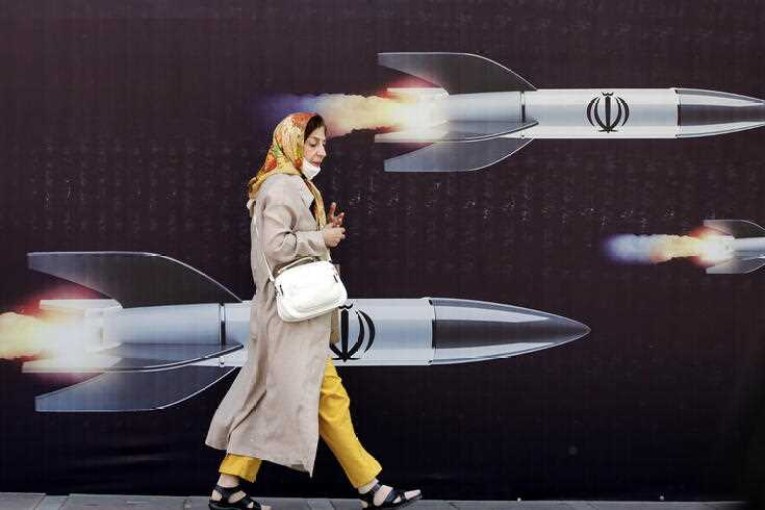Missile claims ‘unproven’ so far
The downing of a Malaysian airliner over Ukraine has renewed attention on the conflict that’s been raging there for months. But despite near unanimous assertions that a missile had blasted the plane from the sky, definitive blame for what President Barack Obama labelled a “global tragedy” seemed likely to be months away.
Obama pledged a full investigation and said evidence indicated the plane was downed by a surface-to-air missile fired from a region controlled by Russia-backed separatists.
But the probe into the crash is likely to take a year or more, experts said, and it faces many challenges. And until its conclusions are known, it’s unlikely that anyone will be held accountable for the deaths of the 298 on board, from 13 countries.
The US along with various other countries, including Australia, plan to send investigators to Ukraine, but the obstacles are legion. Finding pieces of the missile could prove difficult, the plane’s wreckage may be hard to access, and the location of the black box recorder, often crucial to learning about crashes, was unclear. Some experts questioned whether once located it would provide any useful information.
Ukrainian officials have said they believe Russian separatists near the town of Torez used a Soviet-era Buk mobile anti-aircraft missile system to down Malaysia Airlines Flight 17 as it flew along a well-known commercial air corridor over eastern Ukraine on its way from Amsterdam to the Malaysian capital, Kuala Lumpur.
Obama echoed that conclusion, and he criticised Russia on Friday for aiding the separatists, but he stopped just short of assessing blame.
“There are only certain types of anti-aircraft missiles that can reach up 30,000 feet and shoot down a passenger jet. We have increasing confidence that it came from areas controlled by the separatists,” Obama said.
While saying the Pentagon has no direct evidence that a Buk anti-aircraft system or an SA-11 missile crossed into eastern Ukraine from Russia, Navy Rear Admiral John Kirby, the Pentagon spokesman, expressed extreme doubt that the separatists could have obtained such sophisticated weaponry or learned how to use it on their own.
But proving it was an SA-11 might be difficult, said retired Army Lt-Gen Patrick O’Reilly, who served as the head of the US Missile Defense Agency from 2008 until 2013. Very little of an SA-11 missile would have survived the explosion and the high-speed descent from 33,000 feet, the plane’s cruising altitude, he said.
Recovering the aircraft’s black box also may not be a big help. A military aircraft would have the capability of recording information from a missile attack, but the black box on a civilian jet would only have monitored which systems failed in the few seconds after the warhead detonated.
“The only thing they’re going to hear on the black box is a boom,” said John Goglia, an aviation safety consultant and former member of the NTSB.
An additional problem is access to the site. News reports from Ukraine described emergency workers, police officers and even off-duty coalminers spreading out across the sunflower fields and villages of eastern Ukraine, searching for the wreckage.
But reaching the sprawling crash site remained difficult and dangerous. The road into it from Donetsk, the largest city in the region, was marked by five rebel checkpoints on Friday, with document checks at each.
The self-proclaimed prime minister of the separatist Donetsk People’s Republic, Alexander Borodai, said 17 representatives from the Organisation for Security and Cooperation in Europe and four Ukrainian experts had travelled into rebel-controlled areas to begin an investigation. They were allowed to look at part of the crash site but were refused access to the area where the engines wound up.
Obama called for a ceasefire, and Russian President Vladimir Putin agreed. Borodai said that was out of the question.
At an emergency United Nations Security Council meeting on Friday, Russian Ambassador Vitaly Churkin repeated the Kremlin’s charge that the Ukrainian government was to blame for the tragedy, saying its aviation authority should have prohibited the Malaysia Airlines pilot from flying over the conflict zone.
Samantha Power, the US ambassador, noted that the aircraft was cruising at 33,000 feet at a speed “typical for an airliner along an established flight corridor frequented by commercial traffic”. She noted that its transponder was transmitting a code that corresponded with its flight plan and flight data that “were publicly available on the internet”.
Power said a Western journalist had spotted an SA-11 mobile anti-aircraft missile launcher – part of the Buk series of air-defence weapons – near the town of Snizhne in the area of the crash site just “hours before the incident”.
Power also noted that “separatists initially claimed responsibility for shooting down a military transport plane and posted videos that are now being connected to the Malaysia airlines crash” and “also boasted on social media about shooting down a plane”. They “later deleted these messages,” she said.
Malaysia Airlines took pains to absolve itself of any legal liability it might face in the second major airline disaster this year involving one of its planes. It noted that Eurocontrol, which determines civil aircraft flight paths over Europe, had approved the flight plan and that the route over Ukrainian airspace is routinely used for Europe to Asia flights.








